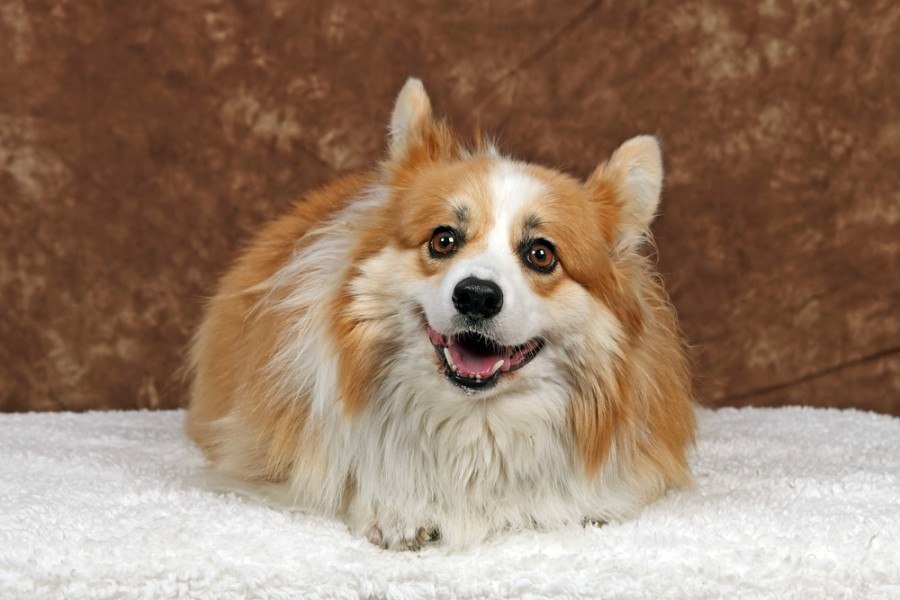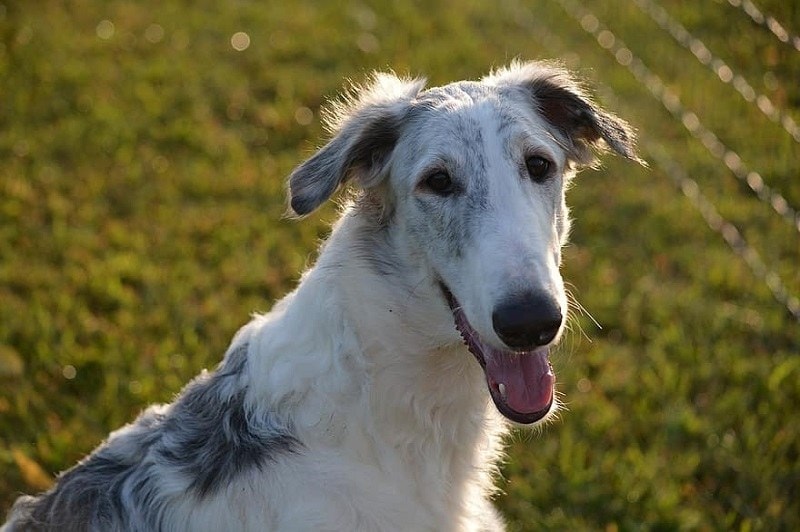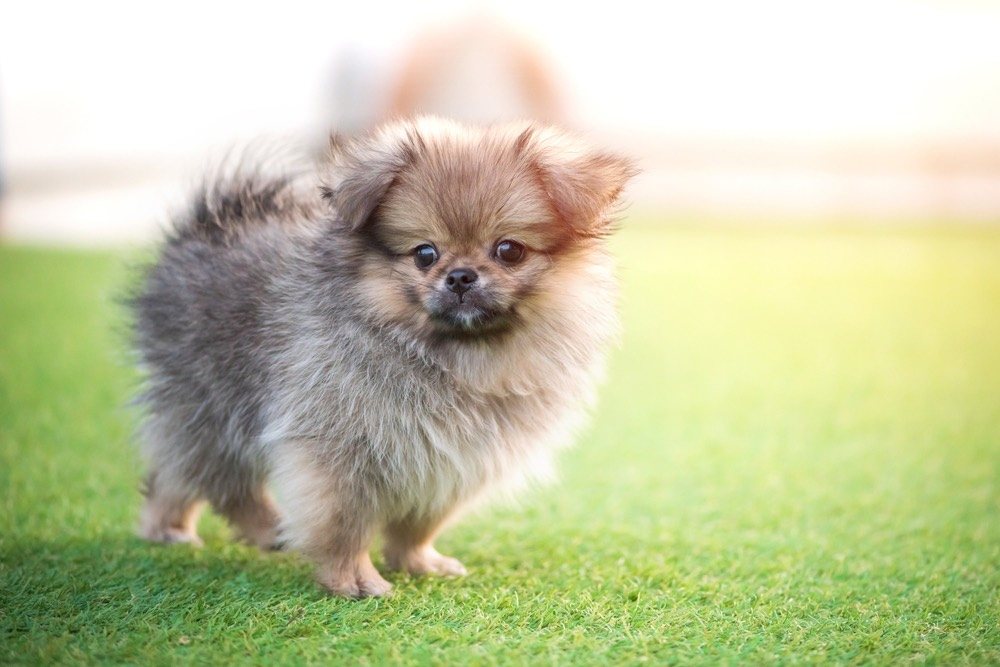Spanish Water Dog: Pictures, Traits & Facts

Updated on
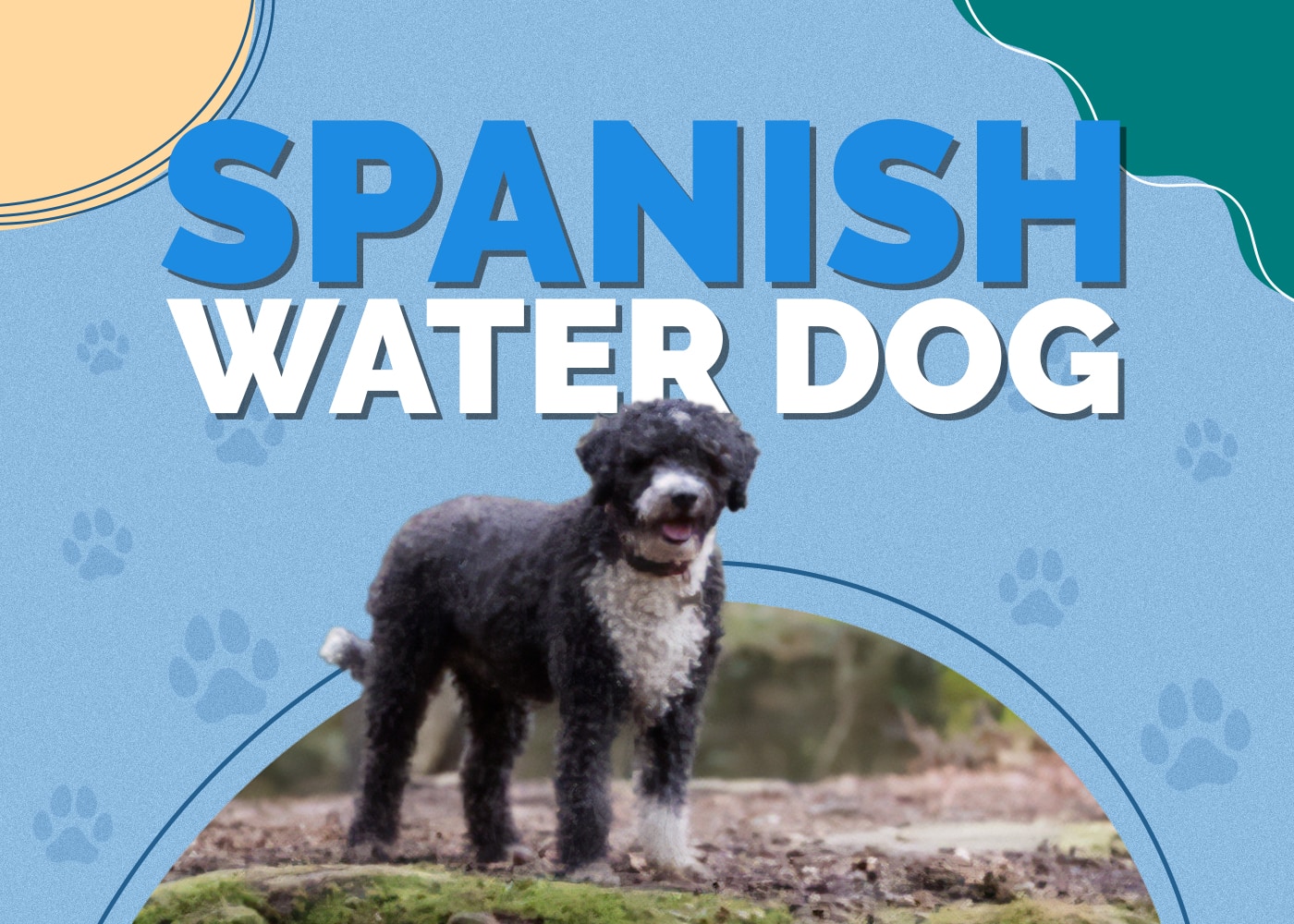
Height:
15 – 20 inches
Weight:
30 – 50 pounds
Lifespan:
12 – 14 years
Colors:
White, brown, black, beige, black and white, white and brown
Suitable for:
Sporting, guarding, family life, companionship
Temperament:
Intelligent, hard-working, devoted to family
The Spanish Water Dog is a rustic looking puppy with a naturally tapered coat that will grow into tight tapered cords if not trimmed. Its hair often covers its eyes. Its broad flat head is in proportion to the rest of the body. It has an alert expression and droopy ears. It can be one solid color, or it can be parti-color, which means one color plus white.
The Spanish Water Dog is extremely intelligent and eager to please. It’s capable of performing a variety of tasks and will make itself useful when you go hunting or fishing. They are easy to train and like to keep a watchful eye over the home while you sleep or are away.
 Spanish Water Dog Puppies
Spanish Water Dog Puppies
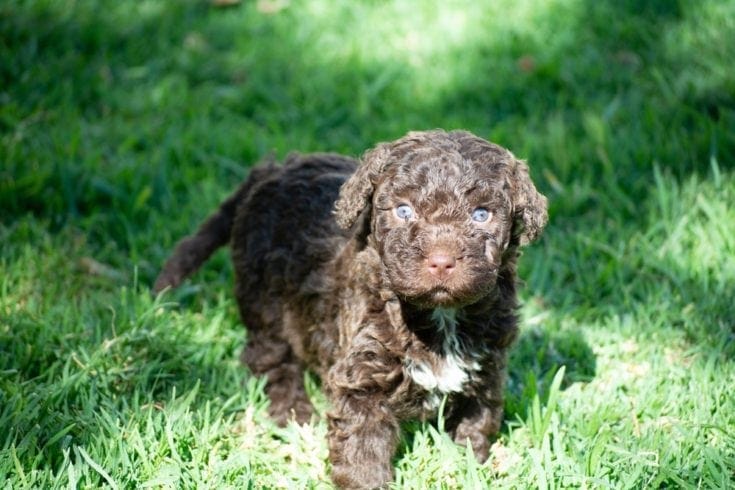
When you’re looking for a Spanish Water Dog, make sure you take your time to find a reputable breeder. These dogs will not be affordable so if someone is selling you one of these dogs for a couple of hundred dollars, stay away since this can be a puppy mill or backyard breeder who doesn’t take proper care of their dogs and are not experienced with dog breeds. Finding a Spanish Water Dog in a shelter might not be an easy task, but you can always ask and you might be surprised on all the adorable dogs that are waiting to have a new home.
Spanish Water Dogs tend to be hard-working pups that are very smart and easily trainable. It’s important to provide your dog with early socialization and training from the start so they get along with other pets and remain calm around humans.
3 Little-Known Facts About the Spanish Water Dog
1. While the Spanish Water Dog does enjoy the water, it’s a herding dog.
2. You should never brush the Spanish Water Dog’s coat.
3. The Spanish Water Dog has many other names, including Churro, Barbetto, Laneto, Perro de Agua Espanol, Perro Turco, and Perro Rizado.
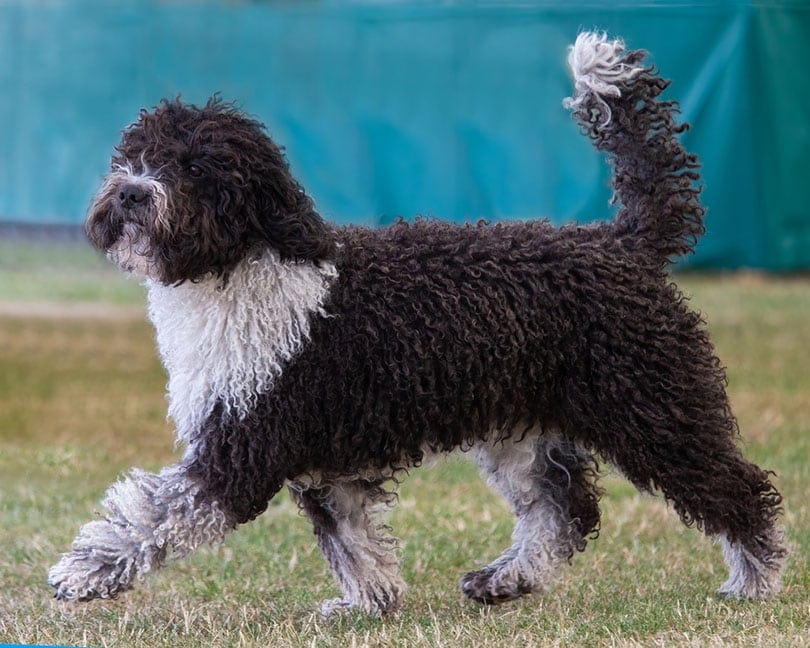
Temperament & Intelligence of the Spanish Water Dog 🧠
The Spanish Water Dog has a happy disposition and is very devoted to the family and makes a great companion dog that can accompany you on hunting and fishing trips. They also enjoy walking and jogging. The only thing you need to worry about with the Spanish Water Dog and children is that this dog tends to herd everything which will include your children.
Spanish Water Dogs are extremely intelligent and easily trained. Besides hunting and fishing, they can quickly learn the rules of many games, and they can complete multistep tasks. You can find this breed used in search and rescue missions, as well as tracking and drug-sniffing.
Are These Dogs Good for Families? 🏡
The Spanish Water Dog is a great pet for families because it is loyal, protective, and watchful. Its herding nature will let you know if someone goes too far in the yard or is doing something they know you shouldn’t do. Their herding nature can scare some small children, so it’s best to socialize both as often as possible and never leave them unsupervised for more than a few minutes.
Does This Breed Get Along with Other Pets? 🐶 😽
The Spanish Water Dog is good to have around other pets as it’s very friendly, and you will often find them engaging in games with the other animals. They are rarely aggressive and will protect the pets as if they were human. However, the herding nature can cause some of the same problems it does with children, especially with cats. It’s best to socialize all parties at an early age when possible so they can grow together.
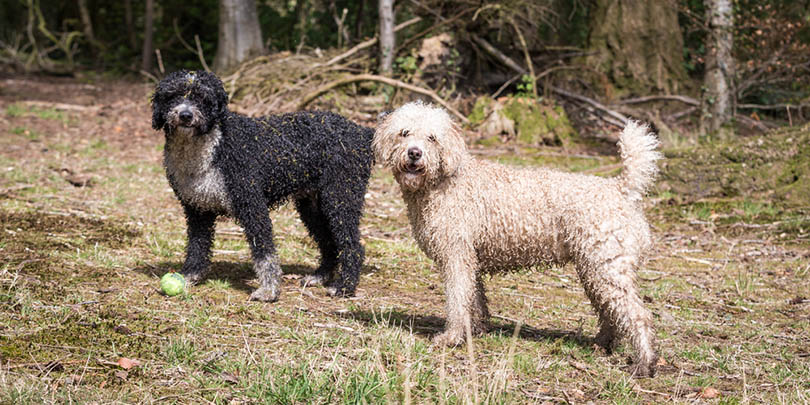
 Things to Know When Owning a Spanish Water Dog
Things to Know When Owning a Spanish Water Dog
Let’s look at a few different things you will want to consider before you purchase a Spanish Water Dog.
Food and Diet Requirements 🦴
The Spanish Water Dog is known to suffer from occasional allergies linked to food, so you will need to be cautious and observant any time you switch to a new brand of food or treat to make sure they don’t develop any reactions. In most cases, high-quality dog food with lean meat like chicken, lamb, or turkey listed as its first ingredient is the best choice. Many brands fortify the food with antioxidants, probiotics, omega fatty acids, and other ingredients that can help promote healthy development and a longer lifespan.
Home-cooked meals can be a healthy alternative to store-bought brands. Still, most veterinarians don’t recommend cooking the food yourself because it’s too challenging to maintain a well-balanced diet over the long-term. However, home-cooked treats are a highly recommended, healthy alternative to many store-bought brands.
Exercise 🐕
The Spanish Water Dog is a highly active dog bred for herding sheep, and as such, requires a healthy amount of exercise per day. You will need to take them for a daily walk while they are under the age of one year. You will not want to exercise them too hard at this early age because their bones need further development, and too much activity can cause problems later in life. Once they are fully grown, these dogs have nearly limitless energy and are capable of extended runs. Games like fetch, and even better, water fetch, are great ways to help your pet burn off the excess energy.
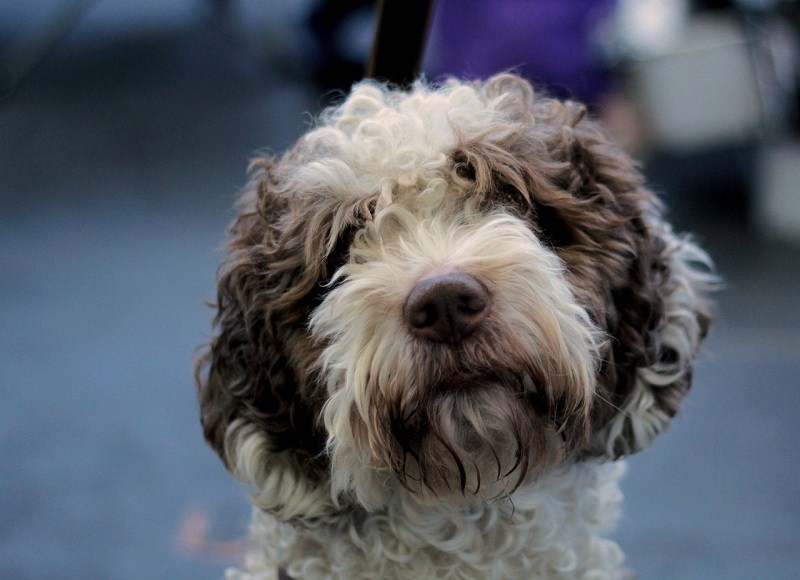
Training 🦮
A Spanish Water Dog is extremely intelligent and easy to train. It’s also eager to please so your dog will look forward to the training sessions. Positive reinforcement training is the preferred and most effective way to teach your pet new tricks. Positive reinforcement is when you use treats and praise to reward your pet for completing a task correctly. Negative reinforcement is when you yell at your dog or act displeased when they get it wrong. Negative reinforcement training is not as effective as positive reinforcement, and it often causes stress to the dog, which will discourage them from wanting to take part in the training.
Standing in front of your pet while holding a treat to get their attention is often the best way to train your dog. Once you have their attention, repeat a command while coaxing them to do what you want them to do. When they succeed, shower them with praise and give them a treat.
Grooming ✂️
Grooming the Spanish Water Dog is easy to groom in most cases and rarely sheds. You should never brush their coat, which is rare because even most short hair breeds require weekly brushing, so the time saved is considerable. You will need to trim the hair on occasion to keep it the same length, but the trimming schedule is up to you. If you intend to let the coat grow until long cords form, then grooming will become more complex. These longer cords grow unique from other breeds, and it’s often better to seek help from an experienced groomer until you learn the proper strategy to maintain this type of coat.
Health Conditions ❤️
Many purebred dogs like the Spanish Water Dog are genetically prone to certain diseases and ailments. Even though the Spanish Water Dog is considered a healthy breed, some problems come up regularly, and we’ll look at those here.
- Progressive Retinal Atrophy
Progressive retinal atrophy is a term for a group of diseases that affect the photoreceptors in the eyes. With this condition, the photoreceptors in the eyes slowly deteriorate and can lead to blindness over time. Night blindness is often one of the first signs of progressive retinal atrophy. Dogs with night blindness will often become nervous at night. They may also tend to bump into objects when the lighting is dim. The pupils may be more dilated than usual, and they will also appear more reflective.
- Hypothyroidism
Hypothyroidism in dogs usually results in a low production of the thyroid hormones. This condition is fairly rare among all but the largest breeds of dog and is often a sign of cancer. Signs of a malfunctioning thyroid gland include thinning hair, a dull coat, excess shedding, weight gain, and reduced tolerance to the cold. If you notice any of these signs, take your pet to the vet immediately.
- Allergies
Luckily, allergies are not a terrible condition for your pet to have. However, the Spanish Water Dog is sensitive to many elements and can quickly develop food, skin, or environmental allergies at any time. Many dogs are sensitive to flea bites, which can cause the skin to become itchy and inflamed, especially at the base of the tail. Food allergies can also cause the skin to become itchy and inflamed. The signs of food allergies usually present themselves around the ears and may be accompanied by digestive problems like diarrhea. Dust and pollen cause most environmental allergies, which can also make the skin itchy, but these signs typically come and go with the seasons.
Staying vigilant about flea and tick medication and keeping your pet on a steady high-quality will help reduce the number and severity of your dog’s allergies. If you need to change your dog’s food, do so extremely slowly and watch for adverse reactions. If your pet has seasonal allergies, you may need to keep them indoors while the pollen drops.
- Hip Dysplasia
Hip dysplasia is considerably more serious than allergies, but there are tests your breeder can run to determine how likely it will be that your dog develops this debilitating condition. Hip dysplasia occurs when the bones in the hip joint don’t form correctly. Misshapen bones rub together and eventually wear down. As the wear becomes more severe, it will affect your pet’s ability to put weight on it and slow them down considerably.
- Glaucoma
Glaucoma is a condition that causes fluid to build up in the eye, creating a pressure build-up. The increased pressure can cause severe damage to the retina as well as the optical nerve. Even with treatment, as many as 40% of dogs that get glaucoma are blind within one year from the disease. Signs of glaucoma include eye pain, red eyes, cloudy cornea, tearing, and bulging eyes.
 Male vs Female
Male vs Female
The male Spanish Water Dog is considerably larger and heavier than the female, but there are very few other differences between them. Some owners suggest that the males are slightly more aggressive, especially towards strangers, and the females are a bit friendlier.
 Final Thoughts
Final Thoughts
The Spanish Water Dog is a fantastic companion dog that’s full of energy and intelligent enough to perform complex tasks. It makes an excellent guard dog and enjoys children and pets. It can get annoying from time to time when it’s trying to herd you, but that’s just its nature. It’s a healthy breed that will provide you with many good years of loyal friendship.
We hope that you have enjoyed reading over our look at this unique web-footed purebred and have found a new pet.
See Also:
Featured Image Credit: Daz Stock, Shutterstock
 Spanish Water Dog Puppies
Spanish Water Dog Puppies
 Things to Know When Owning a Spanish Water Dog
Things to Know When Owning a Spanish Water Dog Male vs Female
Male vs Female Final Thoughts
Final Thoughts